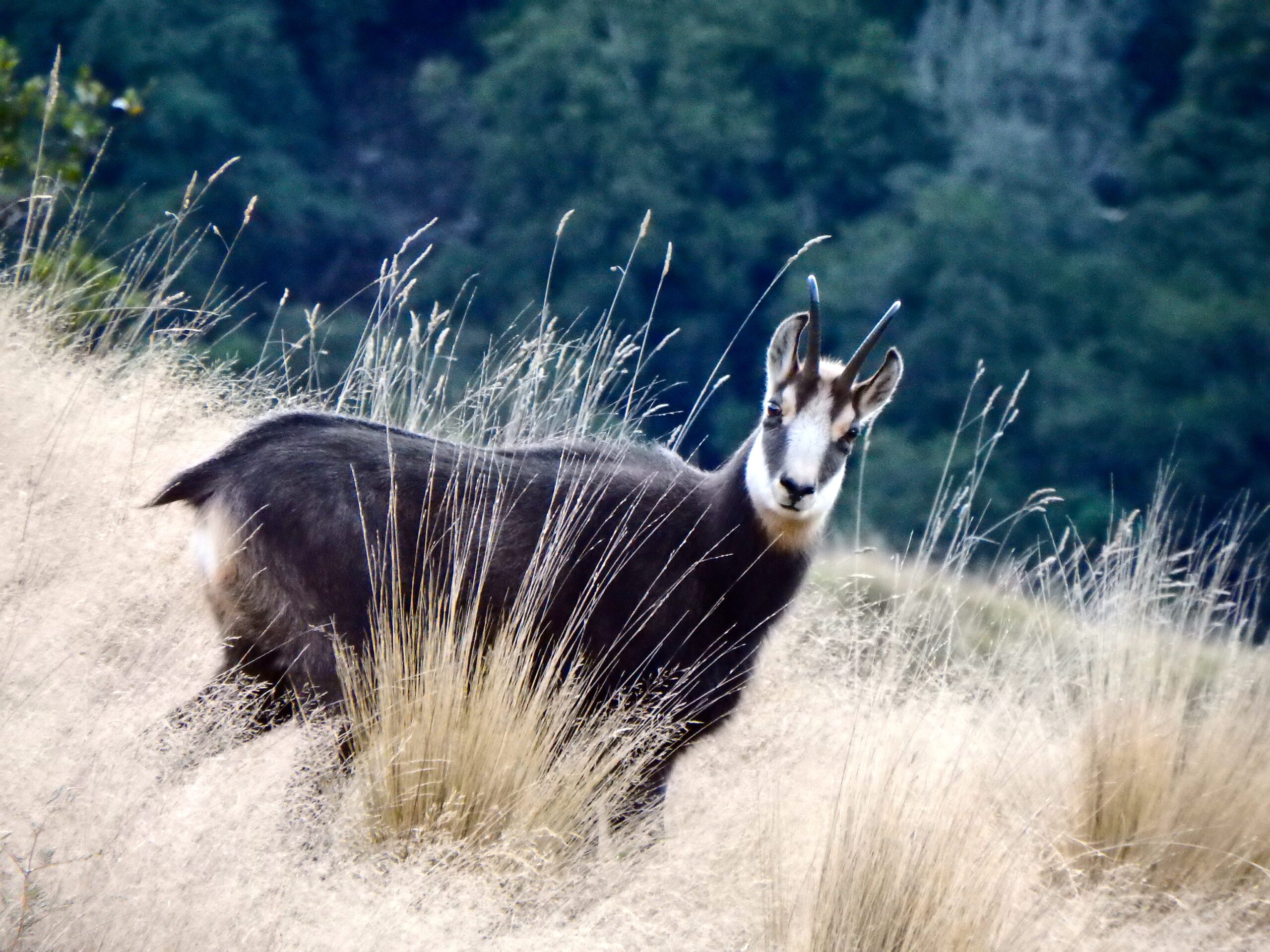In May to June in New Zealand the Himalayan Tahr aren’t the only animals in the steep alpine peaks getting frisky with the opposite sex. The Chamois rut is in full swing as well. The male Chamois move from their solitary locations to find females coming into heat.
Catching this action doesn’t come easy, it takes many steep miles, and the hunting knowledge to get into range of these elusive animals. Chamois are a very unique creature to watch scale the high cliffs to avoid danger. They are most often found in the heights of the southern alps in
New Zealand, and can sometimes be found lower in the valleys at certain times when snow piles in at higher altitudes. Chamois were first introduced to New Zealand in 1907 when they were gifted to the New Zealand government from Emperor Franz Josef II of Austria. They were a protected animal in New Zealand until the 1930’s when the numbers rose to a sufficient amount.
The males are called “bucks” the females are called “does”, and there young are “kids”. Most of the year you often find the females in family groups with other females, and young. Bucks, on the other hand, are most often found by themselves, (except during the rut when they are seeking all the action they can get). The rut kicks off in late May for Chamois and goes through June. The bucks cover miles of country looking for females that are in estrus. During this time of the year the males show rutting behaviour by urinating all over themselves, and being aggressive towards other bucks that come in there way of breeding with females. After the breeding season the bucks will go back to their solitary life style to put weight back on that was lost from the rutting season.
Chamois in size can grow to weigh up to 100lbs. They are a generic color of light brown with dark brown bellies and are most commonly known for their white faces, with black stripes just below the ears to the nose. In the winter months their coats will get significantly thicker, and darken to a jet black color. Both females and males have horns that come straight up off their heads and curl back like a fishing hook. Distinguishing the difference between males and females isn’t always easy, but there are a few things to look for. The horns of a male will more times than not be thicker at the base and will curl/hook back more than those of a female, and females will most times have a young one with them, (unless a barren nanny). However, during the rut when many animals are together, it can be hard to determine the difference. A mature male can be slightly larger than the females and slightly darker in color, but not by much. The best way to know is to watch their habits, get a good look at there horn thickness, how much the curl of horn hooks back and ideally if you can look for a penis or balls on the male. During the rut the Buck has glands that swell behind and between the horns, has a thicker neck as well as having generally longer dorsal hair than the female. Often at times female’s horns will be just as large as the males, making them a nice trophy. A trophy chamois isn’t always easy to determine (especially if they are on the run), but one thing to look for is how far above their ears the length of their horns are. Generally, if their horns exceed their ears by more than a couple of inches you know you are looking at a trophy Chamois.
The country side where these creatures like to reside in is not for the faint of heart. Chamois typically find home in the steep hills sides near the tops of the mountains. They are foragers that primarily feed on grasses in the high country, and will come to lower elevation to find food when the snow gets deep at higher elevations, or in the summer months after moisture. Chamois stomachs are divided into four separate chambers that are similar to cattle. They will regurgitate their food and chew it again (this is called “chewing the cud”) around mid-day after their morning feed. Chamois developed a love of the steep country to avoid predators and their body style adapted well. Because of their athletic body style and split hooves they can maneuver in the sheer rock terrain flawlessly. They are amazingly fast animals running up to 50kph, can jump up to 2 meters vertically, and up to 7 meters horizontally. This gives them a great advantage in the terrain they live in, making them a tough animal to hunt. Chamois have incredible eye sight and typically position themselves in the best vantage points possible giving themselves advantages over anything below.
Generally Chamois aren’t overall vocal animals but they do alarm each other of danger with a whistle like sound. If you are hunting in the high country and start hearing whistling you can be assured your presence has been noticed and now announced. They can be dangerous to hunt because of the nature of the lose rock, steep unforgiving terrain and often icy areas they inhabit, but the hunt is one that will stay at the top of your memory bank. The sport of Chamois hunting attracts people worldwide because of the difficulty of
the hunt. Traditionally in Austria, hunters will keep the beard (dorsal hair strip) of the chamois as a sign of their great accomplishment, and wear it on the top of their hat to show off their trophy, this is called a “Gamsbart”.
Here in New Zealand hunting Chamois is a difficult task, you must have a keen eye, strong legs, and conditioned lungs. For the hunter looking for a challenge in the most stunning landscape, and a trophy to show for your efforts, put the chamois on your list…

